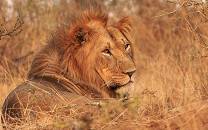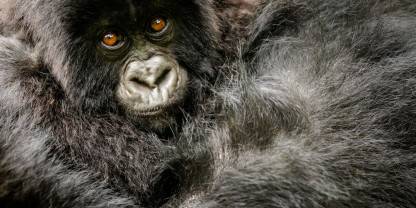
Climate Chart Kigali – 1,600m/5,250ft
Straddling the equator, Rwanda has little fluctuation in temperature throughout the year and no real winter or summer. There is a defined Dry season from June to September. January and February are drier months in the middle of the Wet season (which runs from October to May).
Kigali’s Climate Compared to Rwanda’s Parks
In general, the east of Rwanda, including Akagera National Park, shares the warm climate of Kigali. However, it never gets extremely hot due to the relatively high altitude. The parks in the western mountainous area, including Volcanoes, Nyungwe and Gishwati-Mukura National Parks, are a lot colder with daytime temperatures around 16°C to 21°C (61°F to 70°F), due to the even higher altitude. The temperature drops by about 6.5°C for every 1,000m you climb (or 3.5°F per 1,000ft). The latter three parks are also a lot wetter due to the mountain peaks and rainforest habitat.
In general, the east of Rwanda, including Akagera National Park, shares the warm climate of Kigali. However, it never gets extremely hot due to the relatively high altitude. The parks in the western mountainous area, including Volcanoes, Nyungwe and Gishwati-Mukura National Parks, are a lot colder with daytime temperatures around 16°C to 21°C (61°F to 70°F), due to the even higher altitude. The temperature drops by about 6.5°C for every 1,000m you climb (or 3.5°F per 1,000ft). The latter three parks are also a lot wetter due to the mountain peaks and rainforest habitat.
Dry Season June to September
There is little rainfall during these months in most of the country, but it can still rain at any time in the rainforests.
 View Photos
View Photos
- June, July & August – In the east of the country, afternoon temperatures are usually around 27°C/81°F. In the mountain parks it is a lot colder. Nyungwe has daytime temperatures of around 21°C/70°F, and Volcanoes NP is even colder with temperatures around 16°C/61°F.
- September – Early September is still dry, but sometime this month the rains may begin. Temperatures remain the same. The mountain parks will receive quite a bit of rain in September.
Dry Season Photos
Wet Season October to May
The Wet season is characterized by two periods of rain, the short rains and the long rains, interrupted by a drier spell.
 View Photos
View Photos
- October, November & December – ‘Short rains’: Nyungwe and Volcanoes NP tend to be very wet throughout the rainy season. Daytime temperatures in Nyungwe are about 19°C/66°F and in Volcanoes NP it drops to 15°C/59°F. The rains probably won’t interfere with your safari in Akagera.
- January & February – There tends to be a drier spell between the short and long rains. The exact timing is unpredictable. In Nyungwe and Volcanoes NP it will still be very wet and it can rain anytime.
- March, April & May – ‘Long rains’: these are the wettest months. It tends to rain most days, although seldom for the whole day in the drier east part of the country. In Nyungwe and Volcanoes NP, it can rain for days.





